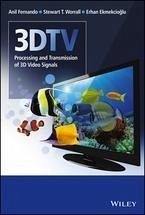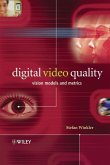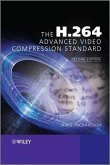A novel and timely primer to the 3DTV system chain from capture to display
This book examines all aspects of the 3DTV chain, from capture to display. It helps the reader learn about the key issues for 3DTV technology. It also provides with a systems level appreciation of 3DTV systems, and an understanding of the fundamental principles behind each part of the chain. At the end of each chapter, the author provides resources where readers can learn more about the technology covered (e.g. more focused text books, key journal papers, and key standards contributions).
This book examines all aspects of the 3DTV chain, from capture to display. It helps the reader learn about the key issues for 3DTV technology. It also provides with a systems level appreciation of 3DTV systems, and an understanding of the fundamental principles behind each part of the chain. At the end of each chapter, the author provides resources where readers can learn more about the technology covered (e.g. more focused text books, key journal papers, and key standards contributions).
- Provides a fundamental and systematic introduction and description of 3DTV key techniques, which build up the whole 3DTV system from capture to consumer viewing at the home.
- Addresses the quick moving field of 3D displays which is attracting increasing interest from industry and academia.
- Concepts in the book will be illustrated using diagrams and example images of processed 3D content. The 3D content will be presented as 2D images in the book.
- Authors to host website providing pointers to more information on the web, freely available tools which would enable readers to experiment with coding video, simulate its transmission over networks, play it back in 3D, and measure the quality and links to important news and developments in the field.
Dieser Download kann aus rechtlichen Gründen nur mit Rechnungsadresse in D ausgeliefert werden.









